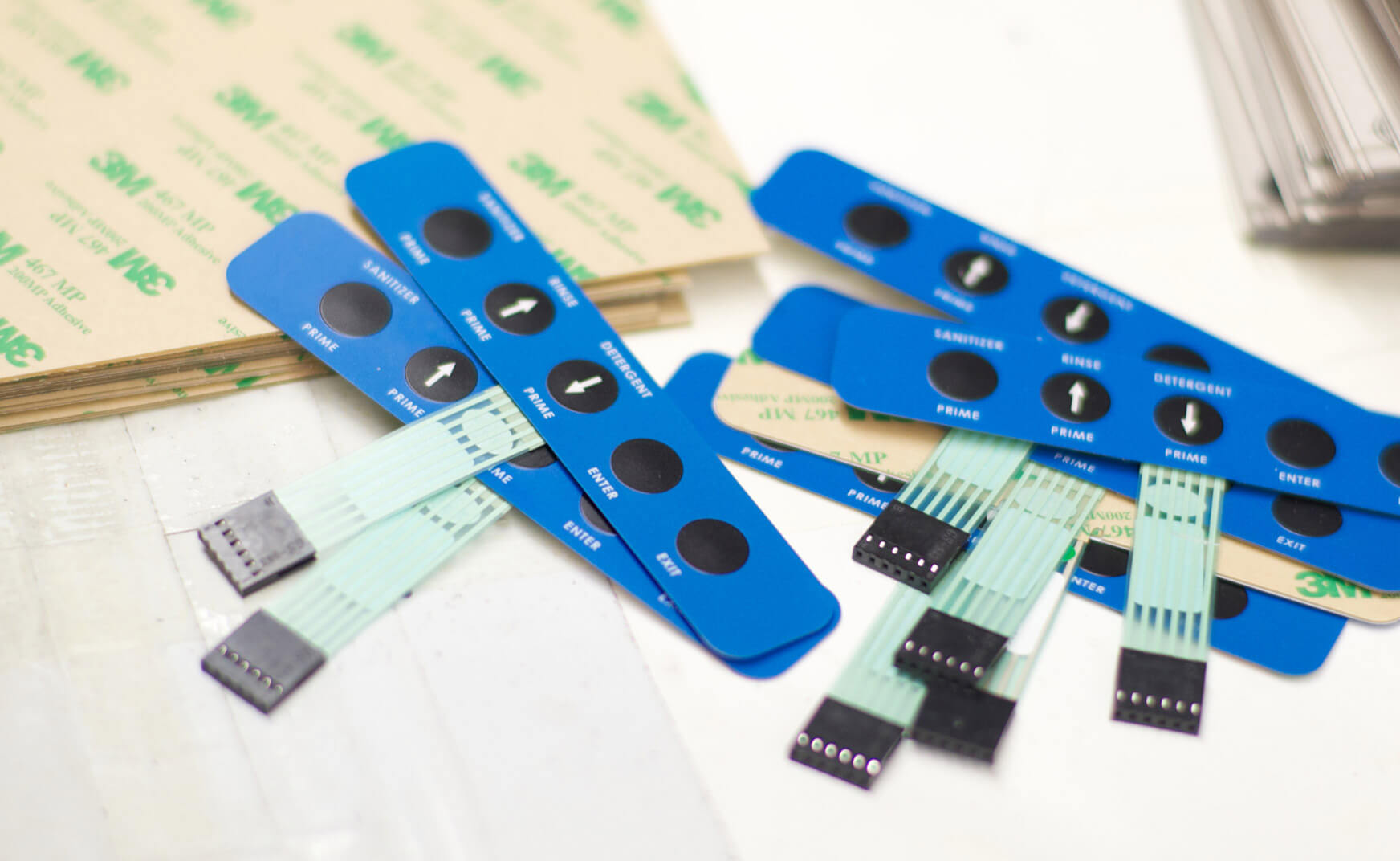Essential Features to Try To Find When Picking a Membrane Switch
Essential Features to Try To Find When Picking a Membrane Switch
Blog Article
Understanding the Functionality of Membrane Switches Over for Customer Interface Tools
The performance of membrane changes stands for a considerable advancement in user interface style, combining effectiveness with aesthetic convenience. As markets progressively focus on user experience, understanding the nuances of membrane layer switch technology becomes important.
What Are Membrane Switches?
Membrane switches are ingenious user interface gadgets that promote customer interaction with digital equipment. These versatile parts include several layers, consisting of a graphic overlay, spacer, and a published circuit layer. The design permits a seamless combination into different electronic devices, enhancing both the aesthetic and functional elements of user interfaces.
Membrane buttons are typically employed in a variety of applications, from household appliances to industrial equipment and clinical tools. Their building and construction commonly features a slim account, making them an optimal option for small layouts. The responsive feedback given by these buttons can be crafted to satisfy specific customer preferences, making sure effective interaction in between the individual and the device.
Durability is another substantial advantage of membrane buttons, as they are immune to dust, wetness, and chemicals, which enhances their life expectancy sought after environments. Additionally, these switches can be customized in terms of shape, dimension, and graphic design, enabling branding and user-specific functions. In general, membrane changes stand for a functional option for enhancing individual experience in electronic tools, incorporating capability with aesthetic appeal in an effective way.
Exactly How Membrane Changes Work
Operating on a simple principle, membrane layer changes use a split building to sign up user input properly. Each button contains numerous layers, including a printed circuit layer, a spacer layer, and a leading visuals layer, which are made to collaborate flawlessly. When a customer presses the top layer, it presses the spacer layer, bringing the conductive elements of the circuit layer into call with each various other.
This call creates a shut circuit, signaling the tool to carry out a particular function. The layout permits numerous arrangements, including tactile responses, which can boost the customer experience by providing a physical sensation upon activation. The materials made use of in membrane switches frequently include flexible substratums, such as polyester or polycarbonate, which guarantee longevity and strength against damage.

Secret Advantages of Membrane Switches

An additional substantial benefit is their density. Membrane switches are thin and lightweight, which enables makers to conserve room in their devices without sacrificing capability. This function is specifically valuable in applications where weight and volume are essential considerations.
Additionally, membrane layer buttons are resistant to dust, moisture, and chemicals, improving their durability. This resilience expands their life-span and reduces the demand for frequent replacements, causing cost financial savings with time.
Moreover, the tactile comments provided by membrane switches can be maximized to enhance user communication. They can include functions such as elevated buttons or distinct clicks, enhancing usability and customer experience.
Applications Throughout Industries
Interface devices using membrane buttons are widespread in a broad variety of industries, showcasing their versatility and capability. Membrane Switch. In the clinical industry, membrane layer buttons are indispensable to like this gadgets such as diagnostic tools and client surveillance systems, where their sturdiness and simplicity of cleaning are critical for preserving health criteria. In the automobile industry, these switches are used in dashboard controls and infomercial systems, offering a smooth and modern interface for individuals.
Additionally, the consumer electronics market advantages from membrane buttons in home appliances and portable tools, where small design and user-friendly interfaces boost user experience. Industrial applications likewise leverage membrane layer switches for control panels in equipment and automation systems, highlighting their robustness and resistance to harsh settings.
In the aerospace and defense industries, membrane layer buttons are made use of in cabin controls and equipment, where integrity and performance under extreme problems are extremely important. Additionally, the video gaming sector progressively integrates membrane switches in controllers and game machines, contributing to an engaging individual experience. In general, the versatility of membrane switches allows their prevalent use throughout countless industries, highlighting their significance in modern-day customer interface design.
Future Patterns in Membrane Switch Modern Technology

In addition, using sophisticated materials, such as polycarbonate and polyester films, is anticipated to climb, supplying improved resilience and resistance to ecological stressors. These materials add to the general durability of membrane buttons, making them suitable for harsher commercial applications.
Moreover, the consolidation of smart modern technology, including IoT connection, will enable membrane switches to communicate with various other devices and systems, promoting an extra interactive individual experience. This pattern lines up with the growing need for wise tools throughout various fields, from health care to consumer electronic devices.
Last but not least, modification choices are expected to increase, enabling suppliers to produce bespoke options customized to particular individual requirements and choices. These advancements will certainly position membrane layer switches as web essential components in the advancement of individual interface technology.
Conclusion
In final thought, membrane changes represent a crucial innovation in customer interface technology, using a trusted and flexible option for varied electronic applications. As advancements in material science and touch picking up innovations continue, click for more info the performance and applicability of membrane switches are expected to broaden, strengthening their significance in modern-day electronic devices.
Report this page